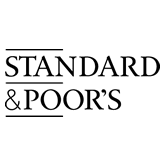As the current recession continues into its seventh quarter, many companies are living on the edge when it comes to risk management and compliance. To conserve cash in the short term, a company will often forego investments in risk management and compliance because it does not bear an immediate return to the bottom line. While this may be true, the ultimate value of solid risk management and compliance is in its ability to avoid catastrophic losses or major impacts to a company's reputation.
Southwest Airlines is a case in point this week as its weak compliance practices have been brought to light through a faulty fuselage that imperiled a flight and its passengers. On a flight from Nashville to Baltimore, the airplane suddenly developed a hole in its fuselage that caused the cabin to lose pressure and forced an immediate emergency landing. Here is what was
reported in the New York Times about the incident and subsequent investigation.
The National Transportation Safety Board has sent an investigator to the airport in Charleston, W.Va., where the 15-year-old plane landed, to inspect it and determine what caused the failure in the fuselage at cruising altitude. Representatives from Boeing and the Federal Aviation Administration are helping in the investigation. The event could have been catastrophic, and an F.A.A. spokesman, Les Dorr, said Southwest was being prudent to examine its airliners immediately. More sophisticated analysis will have to wait for details to emerge from the investigation, he said. “In the absence of any identified problem in the top of the airplane, that’s all you can do,” Mr. Dorr said.
In March, the agency ordered Southwest to pay a $7.5 million fine for a series of safety violations in which its jets were flying with undiagnosed fatigue cracks. The investigation against the airline, based in Texas, also uncovered efforts by managers at the F.A.A. to cover up reports of maintenance problems at Southwest.
As companies continue to sacrifice safety and reputation to protect the bottom line, more reports such as these will surface. However, a proactive, cost-effective risk management and compliance program can help companies avoid "holes" in their approach and maintain a significant competitive advantage over the long-term.













